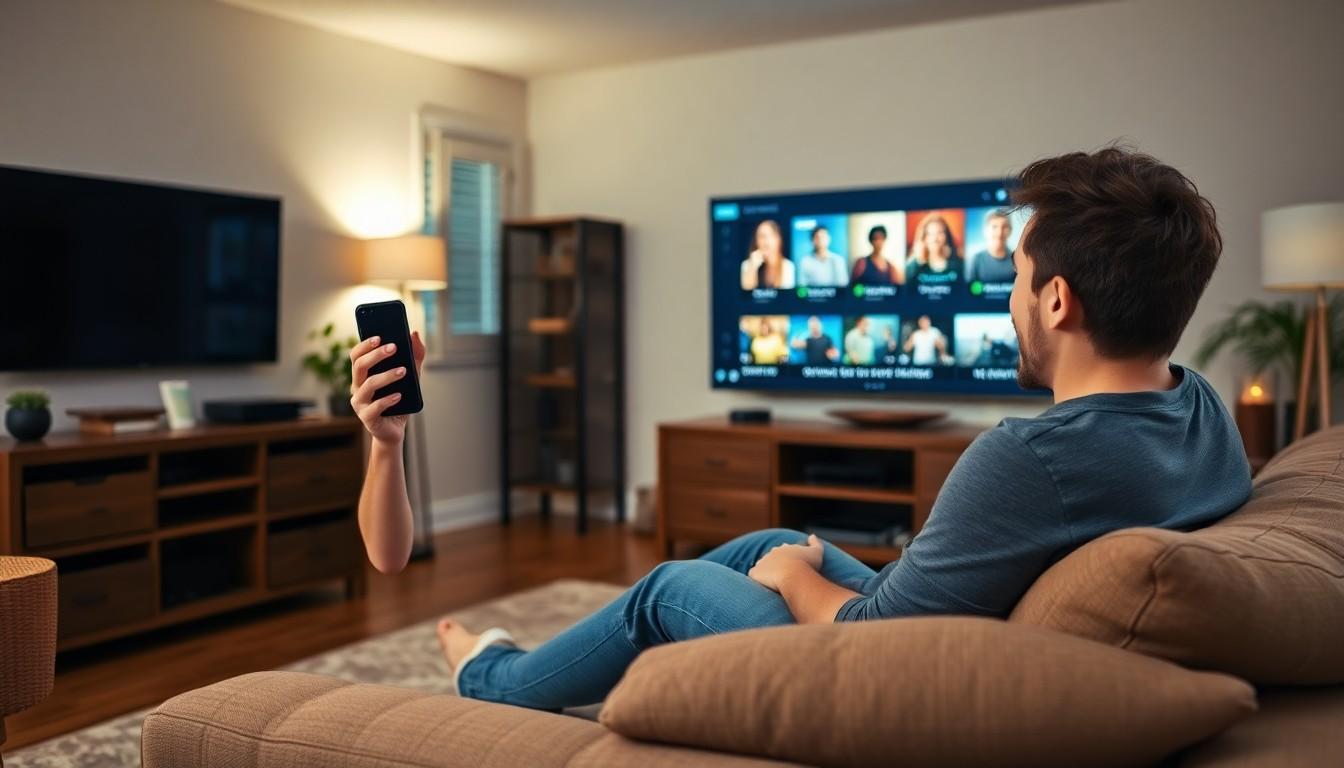Table of Contents
ToggleEver wanted to turn your iPhone into a remote control for your TV? Imagine streaming your favorite shows, sharing vacation photos, or even playing games on the big screen—all with just a few taps. Pairing your iPhone to your TV isn’t just a techy flex; it’s a game changer for movie nights and family gatherings.
Methods For Pairing iPhone To TV
Pairing an iPhone to a TV offers various methods to enhance viewing experiences. Each method provides unique advantages that cater to different preferences.
Using AirPlay
AirPlay enables seamless wireless streaming between devices. To use it, ensure that both the iPhone and TV are connected to the same Wi-Fi network. Then, swipe down from the top right corner of the iPhone to access the Control Center. Selecting “Screen Mirroring” displays available devices. Choose the TV from the list to initiate pairing. Once connected, users can stream videos, music, and even mirror their iPhone screens.
Using HDMI Adapter
An HDMI adapter serves as a reliable wired option for connecting an iPhone to a TV. The first step involves purchasing a compatible Lightning to HDMI adapter. Plug one end into the iPhone and the other into the HDMI port on the TV. Switching the TV input to the corresponding HDMI channel displays the iPhone screen. This method supports higher resolutions, making it ideal for gaming or watching movies without latency.
Setting Up Your TV

Setting up the TV correctly enhances the pairing experience with an iPhone. This process involves ensuring compatibility and connecting to Wi-Fi.
Checking Compatibility
Start by confirming the TV model supports Apple AirPlay or has built-in screen mirroring capabilities. Many modern smart TVs from brands like LG, Samsung, and Sony offer this feature. For older models, an Apple TV device allows for seamless connection. Look at the TV specifications or user manual if unsure. Compatibility ensures a smooth streaming experience.
Connecting to Wi-Fi
Connect the TV to a Wi-Fi network for seamless communication with the iPhone. Navigate to the TV settings menu and select the Wi-Fi option. Choose the preferred network and enter the password. A stable internet connection enhances streaming quality, necessary for smooth playback. Confirm the Wi-Fi connection on the TV by checking the network indicator. Once setup is complete, it simplifies pairing with the iPhone.
Troubleshooting Connection Issues
Connection problems can arise when pairing an iPhone to a TV. Identifying these issues promptly helps maintain a smooth experience.
Common Problems
Users often encounter issues with compatibility. Not all TVs support AirPlay, particularly older models without smart features. Sometimes, Wi-Fi connectivity becomes spotty, which disrupts the connection. Interference from other wireless devices can also cause disruptions in streaming. Additionally, incorrect input settings on the TV may block the effective pairing of the iPhone.
Solutions and Tips
Check compatibility first. Ensure the TV supports AirPlay or use an Apple TV for older models. Restarting the iPhone and the TV may help clear temporary glitches. Verifying the Wi-Fi network connection proves beneficial; both devices must connect to the same network. Switching the TV input to the correct source ensures that the connection route is set. Lastly, reducing interference from nearby devices increases the chance of stable communication between the iPhone and the TV.
Conclusion
Pairing an iPhone to a TV opens up a world of entertainment possibilities. From streaming favorite shows to sharing memorable moments on a bigger screen, the convenience is undeniable. By understanding the various methods available and ensuring the TV is properly set up, users can enjoy a seamless viewing experience.
Troubleshooting any connection issues is also essential for maintaining quality. With the right approach, users can easily transform their living rooms into a hub for family fun or movie nights. Embracing these technologies not only enhances personal enjoyment but also brings everyone together for shared experiences.





